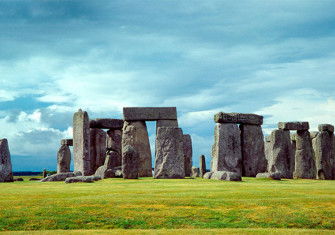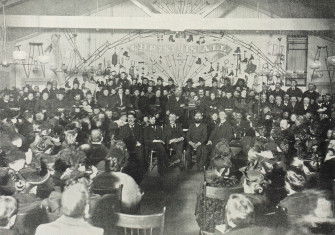Under the Spell of the Druids
Historical facts about the Druids are few, yet this very lack of tangible evidence has allowed their image to be reworked and appropriated by the English, Irish, Scots and Welsh for over 500 years.
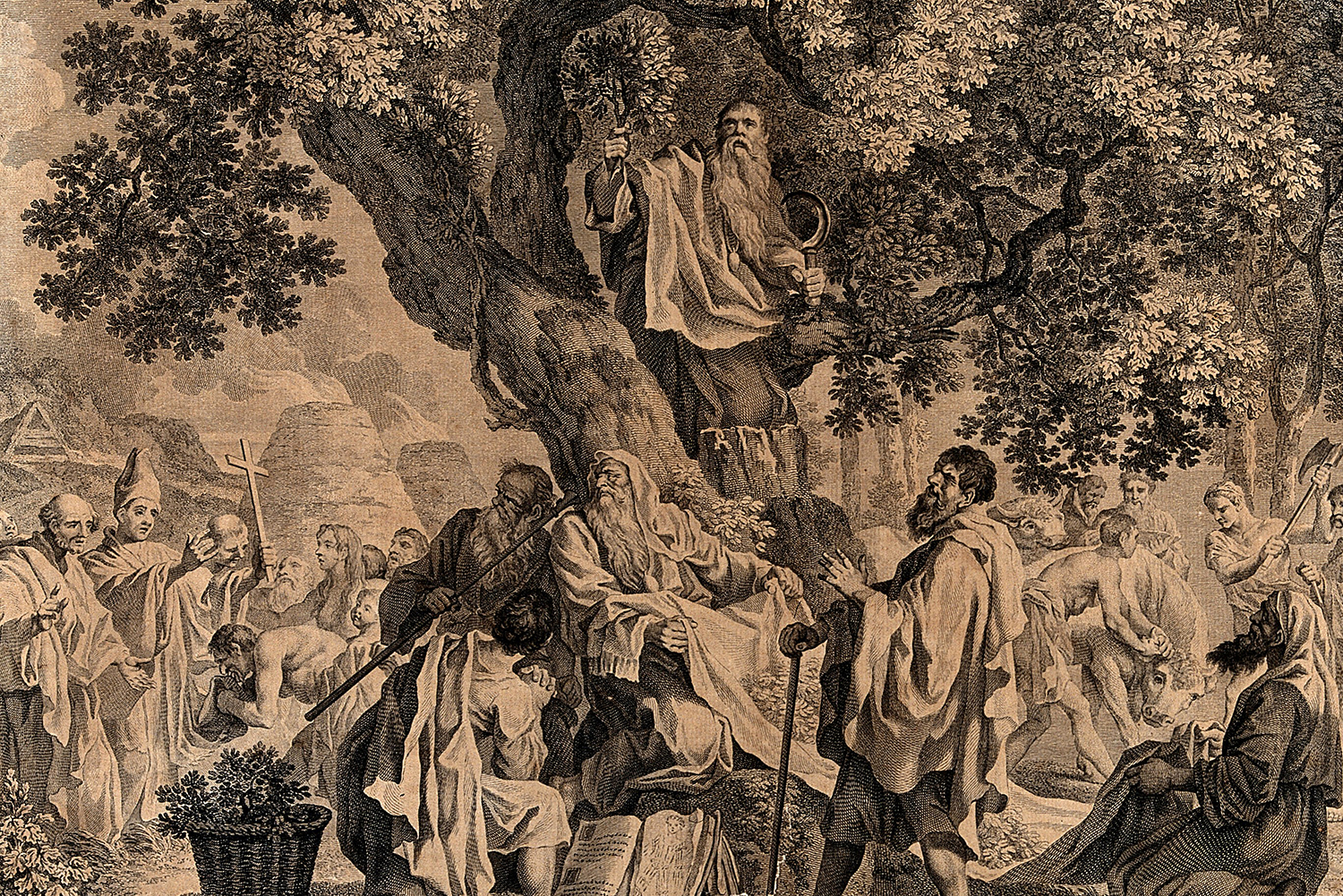
'The Druids; or the conversion of the Britons to Christianity'. Engraving by S.F. Ravenet, 1752, after F. Hayman.
The word ‘Druid’ was one given to experts in magical and religious practice by the peoples speaking Celtic languages who inhabited northwestern Europe around 2,000 years ago. That is all that can definitely be said about it. Those who have tried to say more have relied on two different groups of sources. The smaller, but more famous of those groups consists of the writings of ancient Greeks and Romans. These have the virtue of being the work of people who lived when Druids still existed. Their problem is that almost all relied on secondhand information of unknown quality, much of it very old even by their time. Moreover, none wrote more than a few sentences about Druids.
The only one of these writers who could have encountered them himself was Julius Caesar, who conquered Gaul – present-day France, Belgium and the Rhineland – for the Roman Empire. In a famous passage he describes the Druids of Gaul as having great power and learning and being united in a national organisation under a single leader. No other ancient author credits Druids with this degree of sophistication. Furthermore, his famous description of them is isolated amid detailed accounts of the wars in which he conquered Gaul. If the Druids had been anything like as powerful and well organised as Caesar insisted them to be, they should have featured constantly in those wars, yet they never appear in them at all. Many modern authors, therefore, have charged him with exaggerating the importance and organisation of the Gallic Druids. By doing so he made the Gauls seem more dangerous and more worthy as adversaries and so his own conquest more glorious.
In general, Greek and Roman accounts of Druids fall into three categories. Some, mostly Greek, treat them as great philosophers and scientists worthy of admiration. Others, mostly Roman, make them into bloodthirsty barbarian priests, epitomes of backwardness, ignorance and cruelty. Yet others, like Caesar, suggest that they were both. We have no means of telling which are closest to the truth. In general, the further away from real Druids an ancient author lived the nicer he tended to think they were. This could mean that the more favourable accounts of them are mere wish-fulfilment, fashioning romanticised portraits of noble savages. Those who lived closer to Druids may be regarded as staying more faithful to a brutal reality. On the other hand, the writers who were geographically closer to Druids had the strongest possible motive for exaggerating the danger and the horror that Druidry represented, justifying their conquest by Rome. By this reckoning, the more favourable accounts, mostly produced by Greeks who had themselves been conquered by Rome, could be the more truthful. We can never know.
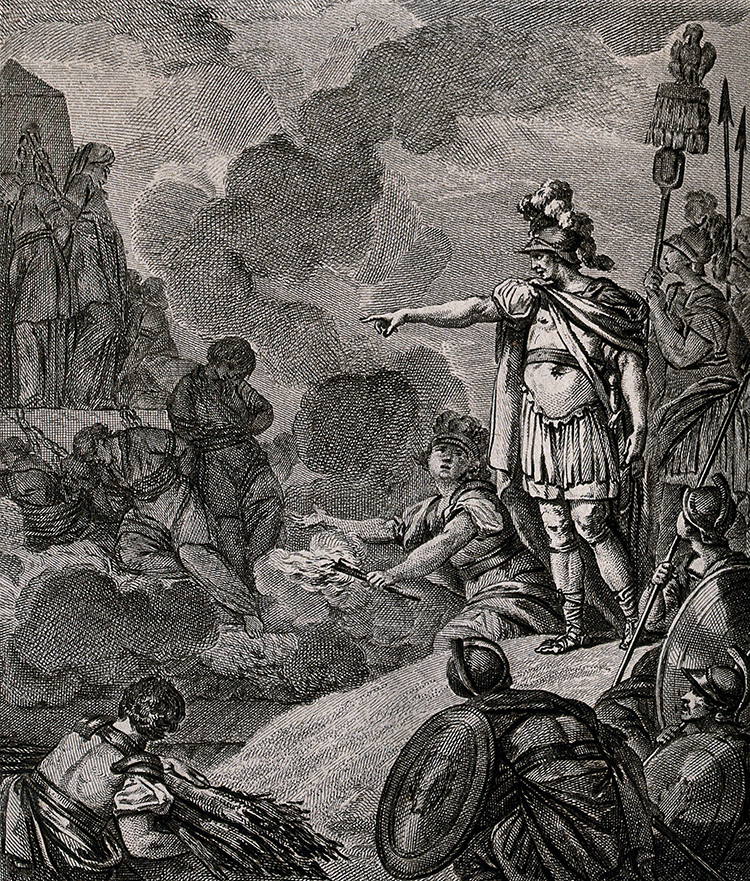
The second group of sources consists of portions of medieval Irish literature. These have the virtue of being produced by a society which itself had once included Druids. Furthermore, the references to Druids in Irish stories are far more frequent than those in Greek and Roman sources. There are, however, two problems with the Irish texts. The first, which they have in common with those from Greece and Rome, is that some portray Druids sympathetically as figures of great wisdom and power and some represent them as savage pagan priests. The second problem is that all the Irish texts were written, and perhaps composed, hundreds of years after the conversion of the Irish to Christianity when Druids had by definition ceased to exist.
As the Irish had no writing before they became Christian they would have been dependent on oral tradition for information on their pagan past and we have no idea of how accurate that was. The findings of archaeology are not encouraging in this regard. The sites identified in the tales as important in the Iron Age were certainly occupied during that period. However, they were open ceremonial structures and not the great royal banqueting halls portrayed in the later stories; the composers of the latter may have been inspired by the sight of ancient ruins on which they had no real information. It is also plain that these writers were influenced not just by the Bible but by pagan Greek and Roman literature, including its views of Druids.
There is also a problem when the ancient and medieval sources are compared. Caesar’s Gallic Druids were members of a highly developed national organisation with a special training. In the Irish texts, however, the word druidecht, literally ‘druidcraft’, is simply a general term for magic. Anybody who works magic can be called a Druid while they are doing so, irrespective of what they are in the rest of the story. Full-time magicians are therefore full-time Druids, but the category is extremely porous in a way in which the Gallic one, at least as defined by Caesar, is not.
In Ireland the identity of magicians slides back and forth between labels of which ‘Druid’ is only one. My own suspicion is that the traditional model is falling into a trap produced by language. If Druid was an ancient Celtic word for anybody who wielded or understood supernatural power then it could be applied to a great range of specialists in different societies speaking Celtic languages. If Caesar was not exaggerating the power and sophistication of the Gallic Druid organisation for his own ends then the Druids of Gaul were uniquely highly developed. It is the glamour of Caesar’s Gallic society of Druids that scholars have often projected onto Britain and Ireland for the past 500 years. This is, not least, because Caesar’s Druids make the best equivalent to the Christian clergy that later European nations have felt to be the norm for a religion worth respecting.
Among archaeologists there is currently no consensus over how material evidence relates to the Druids even within the same country. Not a single artefact has been turned up anywhere which experts universally and unequivocally agree to be Druidic. In 2007, one archaeologist, Andrew Fitzpatrick, suggested that there is plenty of material evidence for people with religious knowledge and skills in Iron Age Britain but little for a specialised priesthood. More often, however, his colleagues tag Druids onto particular finds of theirs in order to draw public attention to them. This is inevitably controversial and in scholarly terms unhelpful. We may need to scrap the Druids from Iron Age archaeology at least for a time. They really seem to be doing more harm than good.
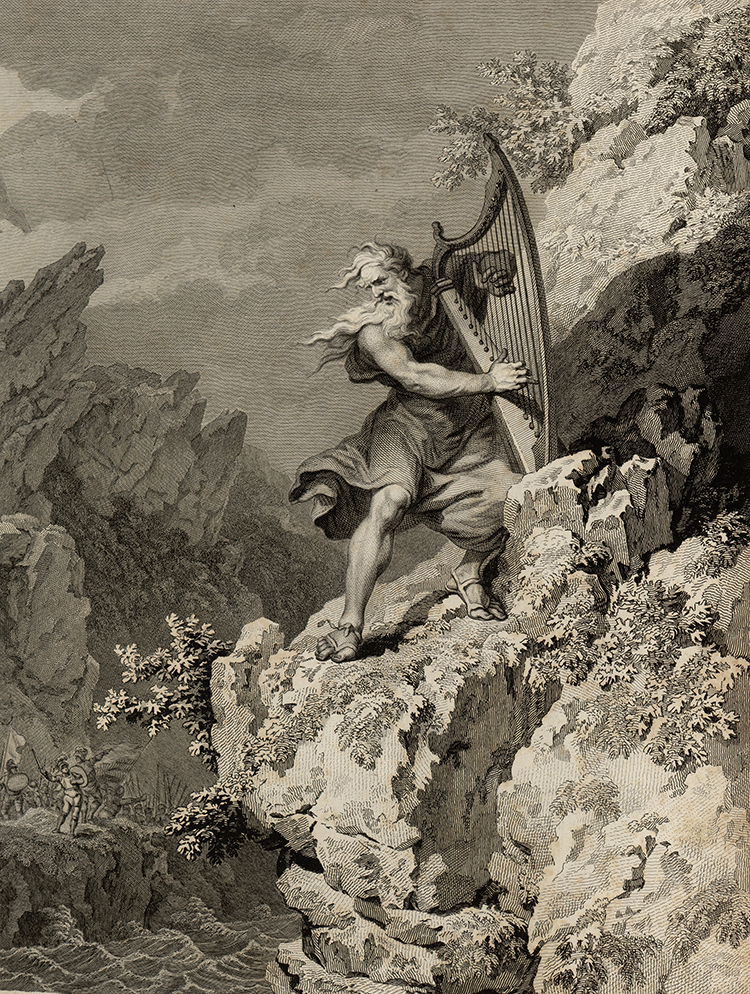
In the field of modern history, however, they still have a considerable place for which there is plenty of precise evidence. This is the story of the ways in which the images of ancient Druids, reliable or not, have been appropriated and reworked in many different ways and for many different motives. The stress that this is indeed modern history, that is, post-medieval, needs to be reinforced. Apart from the Irish, who had built them into national historic memory, the peoples of medieval Europe had no time for Druids. They did not promote the glory of Christendom or the claims of royal or noble families, cities or monasteries. They did not inspire knights to feats of chivalry. They were not even particularly prominent heathen hate-figures. But this situation changed dramatically with the coming of the Renaissance.
In fact, it is one of the reasons why we should retain the very concept of a Renaissance. All around Europe at the end of the 15th century different peoples began to define themselves more closely as national groups according to the language and culture that they had in common. As part of this process they looked into their past for heroic figures and achievements and there some found the Druids. For north-western Europeans these were especially interesting because they were the only figures in their ancient past whom the much-admired Greeks and Romans had found impressive as philosophers and scientists. Accordingly, between 1490 and 1530 three different national cultures took them up in succession as wise, pious and enlightened ancestors, using the most favourable of the ancient texts.
First were the Germans, who had the biggest cultural chip on their shoulders because they were the least associated with classical civilisation. They had also never been associated with Druids, but the overlap of early modern Germany with ancient Gaul enabled them to get round this. This provoked the French, who now occupied most of what had been Gaul, to make a fuss of them in turn, and the traditional alliance between France and Scotland caused the Scots to celebrate them as well, as members of ancient Scottish society. The same process should have been taken up by the English and Welsh who each had an excellent justification for staking a claim to Druids as their own heroic forebears; but neither did. The Welsh were the modern people who were most clearly descended in blood and culture from the Iron Age British.
They, however, already had much more promising historic role-models in their medieval bards, who were Christian, had left wonderful poetry and had been self-conscious Welsh patriots. The English occupied most of the island of Britain and claimed lordship over all, so could plausibly claim to be the heirs to its ancient traditions. Roman writers had stated that the British had Druids and Caesar had claimed that they had actually invented the Druidic system of teaching. The fact, however, that the French and Scots were so keen on them was a disincentive in itself: it could make Druids seem as foreign as haggis and escargots. The English therefore began to put Druids into their history books but generally as villains, drawing on the ancient texts which had portrayed them as priests of a bloodthirsty and barbarous religion.
This situation continued for a couple of hundred years. It ended only in the early 18th century as the politics of the British Isles altered. With the union of England and Scotland in 1707 and the establishment of the Protestant ascendancy over Ireland in the 1690s a new superstate was created, led by England but with potential profits enough for all. Its new inhabitants now had urgent need for a history in common as their historical memories had been formed largely in conflict with each other. Suddenly, the Druids seemed to provide a genuine common past which was all the more important for being at the very dawn of history. Furthermore, they were now for the first time associated by everybody with large and impressive religious monuments which were enduring features in the landscape.
Until the 17th century, the British in general do not seem to have noticed most of the great stone structures – circles and rows – left on their island by Neolithic and Bronze Age peoples, thinking most of them to be natural features. They recognised burial mounds and defensive earthworks as human constructions, but did not know how old they were. They did realise that Stonehenge was one as it looked so different from anything else, but thought it was probably Roman or early medieval. Then in 1740 and 1743 an English clergyman called William Stukeley published two books which added his own marvellous fieldwork to a hundred years of developing speculations. Between them they settled the matter. They proved that Stonehenge was only the best known of a large number of stone circles which, together with rows and tombs made of great stones, were holy places of the prehistoric British. This was, and is, perfectly correct and it was equally logical for Stukeley to attribute them to the priests whom the most ancient texts associated with Britain, the Druids. Stukeley’s ideas therefore became the norm for more than a century.
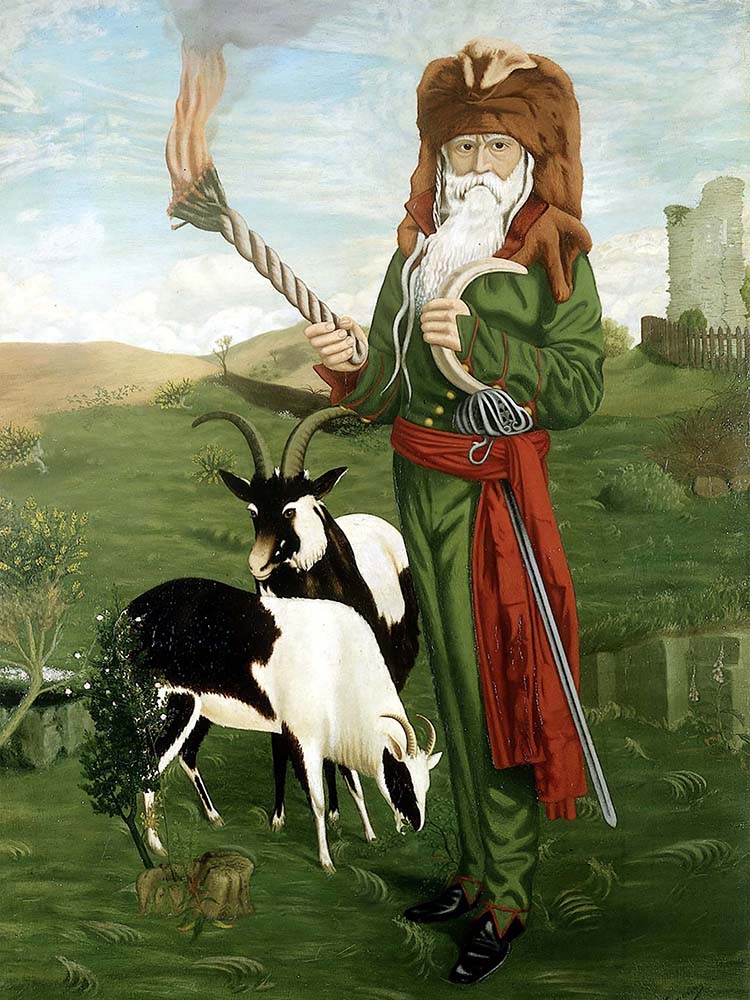
As a result of all this, for most of the 18th century Druids were celebrated as wise and common ancestors by the English, Scots and Welsh alike. To reconcile devout Christians to them, they were rapidly assimilated to the Bible by making them practitioners of the original and good religion revealed by Jehovah to the ancestors of humanity. In this view they had been the best of all ancient European pagans, the least corrupted by idolatry and superstition. This made them natural converts to Christianity, creators of an ancient British church. This pseudo-history provided a perfect excuse for discounting the more hostile accounts of them provided by ancient Roman authors. After all, the Romans were idolatrous pagans who had persecuted Christians and Druids alike and their accusations that Druids had committed human sacrifice could be dismissed as lies.
By the early 19th century, however, the three British nations were starting to diverge again. It had been the Scots who had first made a fuss of Druids and they were delighted when the English came to share their enthusiasm; it seemed a significant concession in the achievement of union. By 1800, however, the English had long forgotten that the Scots had liked Druids first. Instead they associated them more obviously with their own prehistoric monuments, above all Stonehenge, and ignored the Scottish equivalents. This was also a time when Scots were starting to worry that they might be swallowed up completely in a British identity based firmly on Englishness. They began adopting different cultural symbols such as the kilt, clan tartans and the bagpipes which distinguished them from the English. It was the writer most famously associated with this process of Scottish cultural revival, Sir Walter Scott, who also declared war on the Druids. He asserted that they were at once unimportant, obscure and unpleasant and that no sensible person should attach any importance to them.
The Welsh adopted exactly the opposite tactic. They realised that the English were now obsessed by Druids while perceiving that Wales could claim to be the land which most clearly reflected the ancient British language and heritage. From the late 18th century onwards, they therefore took up the Druids fervently as heroic ancestral figures in the hope that the English would respect and cherish Welsh culture the more as the product of a Druidic tradition that all now perceived as important. Like the Scots they began to accumulate national symbols: a distinctive dress (for women), a national anthem, a national instrument (the harp) and a national flower (the daffodil). The central institution of modern Welsh culture was the national competition of poets and musicians, the Eisteddfod, which evolved in the course of the 19th century with Druids built into its opening ceremony, the Gorsedd. This thrives, like the Eisteddfod itself, to the present day.
The impact on the English was ironic. While the Scots turned their backs on Druids, early Victorian England continued to regard them as very important. The distinctive difference was that it turned back to the hostile Roman texts and reinvented them as the most unpleasant feature of the national past: the barbarism from which Britain had eventually commenced its ascent to civilisation, Christianity, modernity and world supremacy. This was greatly helped by two prominent features of the age. One was the acceptance of Charles Darwin’s theory of evolution as a means of accounting for the development of species. This was linked to the spectacular industrial and technological developments of the period to produce a cult of progress in which the old and primitive were automatically devalued and despised. According to this view, prehistoric Britons had to have been disgusting savages simply because they were socially and technologically simple.
The other feature of the time which inclined Victorians to this view was a tremendous expansion of European colonial empires, subduing or exterminating hundreds of traditional peoples. The moral justification of this process was that it converted the conquered societies to civilised and Christian ways. This entailed crying up the more brutal and bloodthirsty aspects of the cultures being encountered and overcome. It gave the English, the educated members of whom were already being brought up on Greek and Roman literature as the definitive Classics, a powerful reason for identifying with the imperial Romans. These had, after all, been the greatest conquerors, colonisers and engineers of the ancient world, and used a very similar ideological justification for adding foreign tribes and states to their possessions.
This hostile attitude to the prehistoric British became so much part of the culture of Victorian England that it survived the ejection of the Druids from their central place in orthodox prehistory. In the 1860s British scholars, propelled by Darwin and by new archaeological discoveries, abandoned the Bible as the basic means of interpreting and ordering prehistoric material. In its place they adopted a Danish system of ordering prehistory according to the stage of technology that particular cultures had reached. It thus became divided, till the present, into Stone, Bronze and Iron Ages. The same scholars, under the influence of evolutionary theory, adopted race as a new way of dividing up humanity. On no good evidence they credited each of the successive ages of British prehistory to the appearance of a new and superior people invading from abroad. According to this scheme the Druids were merely the priests of the last of these waves of invaders, the Celts. As Stonehenge and the other megalithic monuments had been built in the late Stone or early Bronze Age, so this argument ran, Druids could not, after all, have had anything to do with them. From the beginning there were writers, mostly folklorists or philologists, who pointed to the flaw in this logic: that invading newcomers often take over cultural traits, and especially religions, from the people among whom they had settled.
The real reason why the new archaeologists of the mid-Victorian period wanted to get rid of Druids was because they had become too well integrated into the old-fashioned prehistory, based on the Bible and Classics, which the new scholars wanted to overthrow. They had to be thrown out together with Eden and Noah’s Flood. A more subtle factor was that, as part of rejecting the Bible as the framework for prehistory, the new men were determined to break the traditional hold of churchmen over scholarship. They did not like powerful priests in general and the Druids could seem like the ancient version of those. Their effort worked: the new model of the ancient British past, based on a mixture of technological progress and racism, became the orthodoxy and was dominant until the 1970s. The Druids were exiled to the Iron Age perimeter of it and have never broken out since. In fiction, however, the hostile early Victorian English view of the ancient Druids as both horrible and important has persisted until the present.
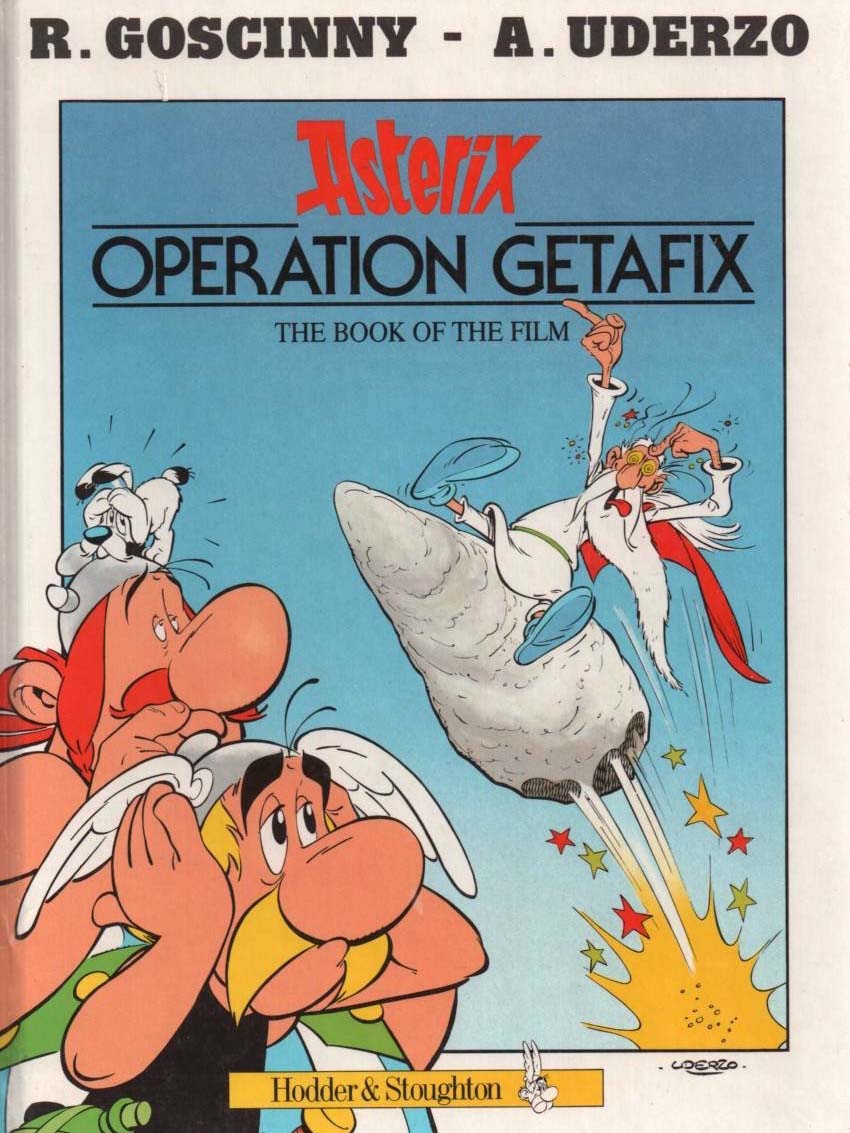
Late-20th century novelists like Rosemary Sutcliff, Henry Treece, Nigel Tranter, Bernard Cornwell and Barbara Erskine have been as ready to reproduce the vision of them as gory barbarians as the makers of films such as The Wicker Man or screenwriters of television series such as Dr Who. By contrast, the Welsh, from the plays of Dylan Thomas and Emlyn Williams to the comic novels of Malcolm Pryce, have been far more affectionate towards them. So have the French, which is why probably the most famous Druid in modern fiction is Getafix from the cartoon strip Asterix. As the general attitude to them in Scotland and England became hostile a minority of the British did continue to regard them as noble ancestors but not in a nationalist cause. Instead, they became countercultural heroes. An Ancient Order of Druids was founded by a bunch of Cockneys in 1781 to provide a safe space in which working men could indulge a taste for the performing arts, especially music. This and its many descendants flourish to the present day as societies in which people can share fellowship, charity and mutual aid.
In 1912 a group of radical socialists formed the Druidic order of the Universal Bond to campaign for peace and fellowship between the world’s different religious faiths as well as social justice. These were the people who held public ceremonies at Stonehenge at the summer solstice until 1985 and still do so in off-peak seasons. Since the 1980s the image of the Druid has become a rallying-point for large numbers of British people who seek a sense of reunion with the natural world and with the ancient people of these islands. It can act as an antidote to the twin prevailing modern deprivations of feeling cut off from nature and from the past. Likewise, to more radical spirits, the ancient Druids have become spiritual kin. These are the people who have turned out to protest against controversial road-building and other construction projects, and perceived official infringements of civil liberties. Druids have become symbols to contemporary British people who want things to be greener, funkier, more organic and more libertarian.
As such, they prove again their staying power as a part of modernity, simply because of, rather than despite, the paucity and unreliability of the historical references to them. As they are so insubstantial as historical figures they can be pressed into all manner of contexts.
Ronald Hutton is the author of Blood and Mistletoe: The History of the Druids in Britain (Yale, 2009). This article was originally published in the April 2009 issue of History Today.



